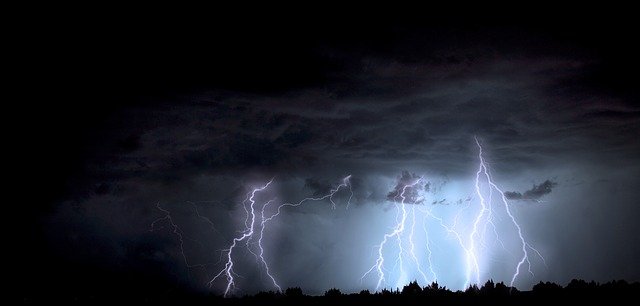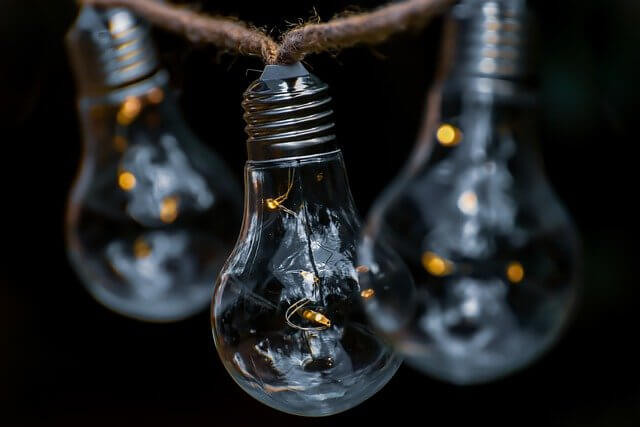An understanding of electricity can be gained in several different ways. One way is to study the occurrence of electric charge in matter.

Source: pixabay.com
Electric charge is a primary property of matter because the source of electric charge is in the protons and electrons of all atoms. There is no accepted theory that explains why charge is “quantized”—that is, why the smallest amount of charge is that of an electron or a proton, and why the amount of this charge is what it is. However, once the existence of electric charge in nature is accepted, electrical theory can provide a description of all known electrical phenomena.
A second way to understand electricity is to study electrostatics and electrodynamics. The former deals with the electrical forces between charges at rest, and the latter deals with the electrical and magnetic forces between charges in motion.
A third way to understand electricity is to study the electrical behavior of bulk matter in its various forms. Such a study would consider the conduction of charge (currents) in solids, liquids, and gases. In solids, the moving charged particles usually are electrons. In gases and liquids, current flow results from the motion of individual ions under the influence of an externally applied field. The electrical and other properties of metals, insulators, and semiconductors also would be considered. The understanding of electrical and magnetic phenomena in these bulk materials depends not only on the study of the properties of the bulk materials but also on an understanding of individual atoms. Thus atomic theory and the fields of gaseous, liquid-state, and solid-state physics are closely enmeshed with electrical theory in describing electrical effects in matter.
Electrical Properties of Matter.
Bulk materials, as well as atoms and molecules, are made up of positive and negative charges. These charges appear in equal amounts, and therefore matter normally is electrically neutral—that is, it has no excess positive or negative charge. However, there are numerous mechanisms by which matter can gain an excess positive or negative charge. The simplest and most familiar case is the ionization of atoms or molecules. This process is possible because only a low energy is required to remove an electron from or add an electron to the molecule, forming a positive or negative ion. Similarly, electrons can easily be added to or removed from bulk matter to give it a net charge.
Metals.
Each atom in a metal gives up one or more electrons, thereby forming a pool of free electrons that move randomly within the metal. When under the influence of an externally applied force—an electric field—these electrons drift in an orderly fashion from one end of the metal to the other, and the metal provides little resistance to the flow of charge. Thus metal wires are a key component of an electric circuit through which current flows.

Source : pixabay.com
Semiconductors.
Semiconductors also allow current to flow, and semiconductor devices, such as diodes, have properties that enable currents to flow in one direction more easily than in the opposite direction. This and other semiconductor properties give rise to a host of applications in electronics.
Insulators.
An insulator, or dielectric material, has virtually no freely moving electrons. In a dielectric material, an external electric field cannot cause charges to drift through the material as in metals, but there can be a small displacement of the electrons in one direction with respect to the positive nuclei of the molecules. This relative displacement, which is called polarization of the material, is important in many electrical phenomena.
Magnetic Properties of Matter.
The magnetic properties of matter, which arise from the properties of the individual atoms of a magnetic material, produce important effects when the material is placed in an external magnetic field. The most noticeable example is the magnetization of iron or some other ferromagnetic material, which thereby is put in a state that exhibits large magnetic effects independent of external conditions. The very early discovery of magnetic effects resulted from the occurreııce of magnetized materials iıı nature.
Charge Separation.
To produce electric fields or electric currents, it is Rrst necessary to redistribute the natural state of charge in matter in order to place some excess positive charge in one place and some excess negative in another place. To do this, positive and negative charges must be separated. Since unlike charges attract each other, their separation requires that external work be done against these attractive forces. There are a number of mechanisms by which positive and negative charges can be separated. The earliest method was the transfer of charge by friction. For example, if a glass rod is rubbed with a silk cloth, some negative charge is removed from the glass and taken up by the silk, leaving the glass with a net positive charge and the silk with a net negative charge.
A much more important mechanism for separation of charge occurs in a battery. Consider two electrodes—one made of copper and the other of zinc—that are placed in a dilute acid solution. At both electrodes, chemical forces will result in some of the metal being dissolved. Some positively charged metal ions are removed from each metal electrode and go into solution, leaving a net negative charge on each electrode. However, the chemical forces that cause the two electrodes to dissolve are different for the two metals, and therefore one electrode becomes more negatively charged than the other. If the two electrodes are connected externally by a wire, current will flow because one electrode is positive relative to the electrode with the more negative charge. The difference in the net charge between the two electrodes is maintained by chemical forces.
The most important mechanism for producing charge separation is the electric generator. In this device an external source of mechanical energy causes the rotation of wire coils in a magnetic field. An electric force is produced in the coils by Faraday induction, and this force causes a flow of current to an external circuit. O^her mechanisms for producing charge separation include photoelectric, thermoelectric, and piezoelectric effects.